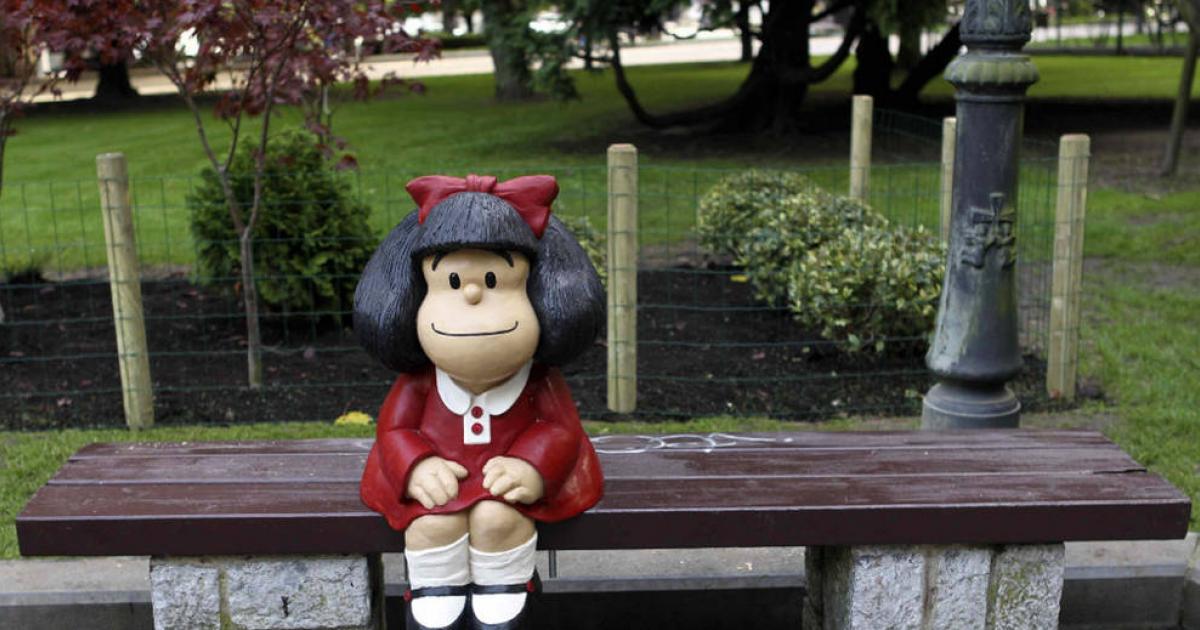
Mafalda continues without understanding the world
- Jessica Lewis
- 0
- Posted on
Mafalda Go to his mother to glow in domestic tasks. And ask: “Mom, the ability to succeed or fail in life … is hereditary?” The vignette belongs to the seventh rectangular volume edited by Esther Tusquets in Lumen, a collection that when it came out in Spain in 1970 carried a forced label: “For adult readers.” Mafalda did not miss any home with cultural concerns during the Transition. The creature created by the Argentine Joaquín Wash, aka Cinchona (1932-2020), questioned the world and dislodged adults with their reflections. Its author, who stopped drawing her in 1973, had inspired her grandmother Tetéa communist and short Andalusian of breaks and shake.
Mafalda has never left the bookstores, but suddenly he is in fashion again. Today reaches cinemas ‘Quinography’a documentary about the cartoonist who contains his last interview, granted in 2014, when he was losing his eyes and had returned to his Mendoza native, on the border with Chileto spend your last years. Barely known in USA, Mafalda these days of polarization and prebélico climate are launched in five volumes by the editorial Elsewhere. “It’s like Charlie Brown with socialism,” defines the cartoonist Liniers in the ‘New York Times’. For its part, Netflix will premiere at the beginning of next year an animated series of Juan José Campanellathe director of ‘The son of the bride’ and ‘The secret of his eyes’ (there was another series about Mafalda in the 70s and a film in 1982).
The jury that in 2014 granted Quino the Prince of Asturias Communication Award He was right to define an “intelligent, ironic, nonconformist, answering and sensitive girl, who dreams of a more dignified, fair and respectful world with human rights.”
‘Quinography’ Start with the school photo of Joaquín washing and its notes, among which it did not stand out in drawing. His family makes inventory and finds photographs of the castle of Fuengirola (Málaga). From there they emigrated their parents and arrived in Mendoza, where Quino grew up among Spaniards, Italians, Syrians and Lebanese.
That Republican family inoculated the child political discussions. Quino was a lonely kid who did not play with his brothers because they were older than him. Orphan at age 15, is fascinated by an uncle of his publicist who entertains him with his drawings. It is clear that he will make a living with pencil and paper.
Mafalda was born in 1964 in the Weekly ‘First Flat’ after an advertising campaign of appliances that was not carried out. An editor launches to collect the comics in a book and the 5,000 copies are exhausted in two days. First we know the insolent girl with her parents, employed in an insurance company and housewife. Then Quino adds characters: his little brother Guille, who eats land of the pots and is in love with Brigitte Bardot; the dreamer Felipe, who never understands what happens; Manolito, gross, direct, without filters, with a blind faith in the economy; The egocentric Susanita, who only wants to marry and measure socially; The pet, a turtle called … bureaucracy.
The stick of abollo ideologies as Joan Manuel Serrat states in the documentary, Mafalda has become “a cultural reference of a certain and daily world.” “All Quino’s characters are still alive in collective memory because they are in turn the memory of that time that is transmitted,” praises the singer -songwriter, who was a friend of the cartoonist.
Quino is portrayed in the film of Mariano Donoso and Federico Cardone as a sensitive, vulnerable, tormented and tragic guy. A good man away from the nice storyteller. An anticlerical atheist studying the Bible to discover its contradictions and samples of cruelty, discovers its editor. An artist who suffered censorship and after 2,000 strips stopped drawing Mafalda because he limited creativity. “If it had been a real girl, I would be among the 30,000 missing of the Military Board,” he said on one occasion. In February 1976, shortly before Videla’s coup d’etat, an armed group broke into the house of Quino and his wife, Alicia Colombo, who saved his life for traveling. They wanted to take revenge for a joke in which Mafalda teaches Miguelito’s club and says: “Do you see? This is the stick of abolling ideologies.” The Intelligence Service wallowed Buenos Aires with the replica: a drawing with Manolito and the phrase “Thanks to this stick you can go quietly to school.” When the military murdered five Palotinos priests in a parish of Buenos Aires left the Mafalda poster with the stick of abollary ideologies.
Quino lived his exile in Milan and Madrid with his inseparable Alicia, a chemistry doctor who left her work in the Atomic Energy Commission to be a representative of her husband, a useless in everyday work. Thanks to her Mafalda was published worldwide. They had no children “not to bring this asylum crazy.” The humorist was as shy as Felipe with the girls, “but you saw in those eyes that things were happening,” Jorge Valdano added. Upon his return to Mendoza, Quino looked out the window and regained the light of when he was a boy.
(Tagstotranslate) Mafalda